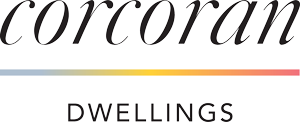After Hurricanes Idalia and Helene affected St. Petersburg in consecutive years, flood zones have become a hot topic here. So let’s break it down.
Flood zones AE and VE affect many St. Pete waterfront areas, and if you buy in one of these zones, flood insurance is usually required by your mortgage lender. If you are buying with cash, you can certainly self-insure. These designations come from FEMA’s flood maps, which outline areas at higher risk of flooding due to storm surge, heavy rain, or tidal influence. Neighborhoods in St Petersburg that are generally in AE include Boca Ciega Bay, parts of Jungle Prada and surrounding, Shore Acres, Venetian Isles, Snell Isle, Coquina Key…and several more.
For buyers in Pinellas County, understanding flood zones is crucial — not just for safety, but also for insurance costs, mortgage approval, and long-term property value.
🌊 Flood Zone Map Overview (FEMA)
St. Petersburg, Gulfport, and surrounding Pinellas neighborhoods are mapped by FEMA’s Flood Insurance Rate Maps (FIRMs). You can view the official maps directly and even search by address at FEMA Flood Map Service Center.
Zone AE – Common along canals, bayous, and parts of Boca Ciega Bay. Indicates areas with a 1% annual chance of flooding (a “100-year flood”).
Zone VE – Found in areas directly facing the Gulf, such as barrier islands. The “V” stands for velocity hazard, meaning wave action in addition to flooding.
Zone X (unshaded) – Areas of minimal flood risk. Insurance is optional and very low cost.
Zone X500 (shaded) – Moderate risk areas, sometimes called the “500-year floodplain.” These don’t require flood insurance but carry a 0.2% annual chance of flooding.

⚖️ High-Risk vs. Moderate/Low-Risk Zones
High-Risk Zones (AE, VE):
Lenders almost always require flood insurance. Properties in these zones tend to have higher premiums and stricter building code requirements.
Moderate Risk (Zone X500):
Sometimes overlooked, but important. Flooding is less likely than AE/VE zones, but more likely than minimal-risk areas. Insurance isn’t mandatory, but strongly recommended — and premiums are much cheaper, often $250–$500/year.
Low Risk (Zone X unshaded):
Minimal flood risk. Insurance is optional, and premiums are typically very low.
👉 Even outside high-risk zones, remember: 25% of flood claims nationwide come from moderate and low-risk zones like X500 and X. My own insurance provider says it’s more like 40% locally.
💰 Insurance Requirements & Costs
If your home falls in an AE or VE zone and you’re financing with a mortgage, flood insurance is mandatory. Costs vary widely:
Zone AE: $600–$2,000/year on average depending on elevation and coverage.
Zone VE: $2,000+/year due to higher risk from wave velocity.
Zone X500 (moderate risk): Optional, often $250–$500/year for a preferred risk policy.
Zone X (minimal risk): Optional, lowest premiums.
Pro tip: Elevation certificates can sometimes lower premiums, since they show exactly how high your property sits compared to base flood elevation.
🏠 Impact on Home Values & Resale
Flood zones can affect buyer demand and resale value in St. Pete:
- High-risk zones (AE/VE) may sell at a discount compared to similar homes outside flood zones.
- Moderate risk (X500) can actually be a selling point versus AE, since buyers avoid mandatory high-cost insurance but may still choose optional coverage.
- Low risk (X unshaded) homes often command a premium since buyers want peace of mind and lower costs.
Recent hurricanes in Florida have made buyers more flood-conscious, and many are asking about flood zone status before they even schedule showings.
✅ Tips for Buyers in St. Petersburg
- Check the Zone Early – Use FEMA’s map or ask your Realtor (hi 👋 I’m Liane!)
- Get an Insurance Quote Before Closing – Know your monthly cost impact upfront.
- Consider Elevation – Homes built on pilings or higher lots often have lower premiums.
- Ask About Past Claims – Sellers must disclose known flood damage in Florida.
- Work with a Local Expert – Pinellas has a patchwork of flood zones — even across the same street!
Evacuation Zones
Evacuation Zones are a bit different than flood zones but they do generally correlate to low lying areas that have the greatest risk of flooding. To check evacuation zones, visit the Pinellas County website. There are also flood plain maps here as well.
📩 Next Step
Buying in St. Pete means balancing waterfront living with flood awareness. Don’t let insurance surprises catch you off guard.
👉 Ask me for a free flood-zone check on any home you’re considering — I’ll pull the FEMA map, confirm requirements, and connect you with a trusted insurance pro for real numbers.
❓ Flood Zone FAQs for St. Petersburg, Florida
Q: Is flood insurance required in Flood Zone X500 in St. Petersburg?
A: No — lenders don’t require flood insurance in X500, but FEMA still considers it a moderate-risk zone. Many homeowners choose a low-cost “preferred risk” policy for extra protection.
Q: What flood zone is most of Gulfport, FL in?
A: Much of Gulfport sits in AE flood zones near Boca Ciega Bay, meaning flood insurance is usually required. Some inland streets fall into X or X500, which carry lower risk and optional coverage.
Q: What’s the difference between Flood Zone AE and X500?
A: AE means high risk (1% annual chance of flooding), while X500 means moderate risk (0.2% annual chance). Both zones can flood, but only AE requires mandatory insurance for mortgages.
Q: How do I find out what flood zone my home is in?
A: You can look it up on FEMA’s Flood Map Service Center, but it’s often easier to ask your Realtor to check. I can quickly pull the map and explain what it means for your insurance costs.
Q: Can homes in Zone X (low risk) still flood?
A: Yes. While Zone X is considered minimal risk, about 1 in 4 flood claims nationwide come from homes outside of high-risk zones. Optional coverage is usually very inexpensive.


Leave a Reply